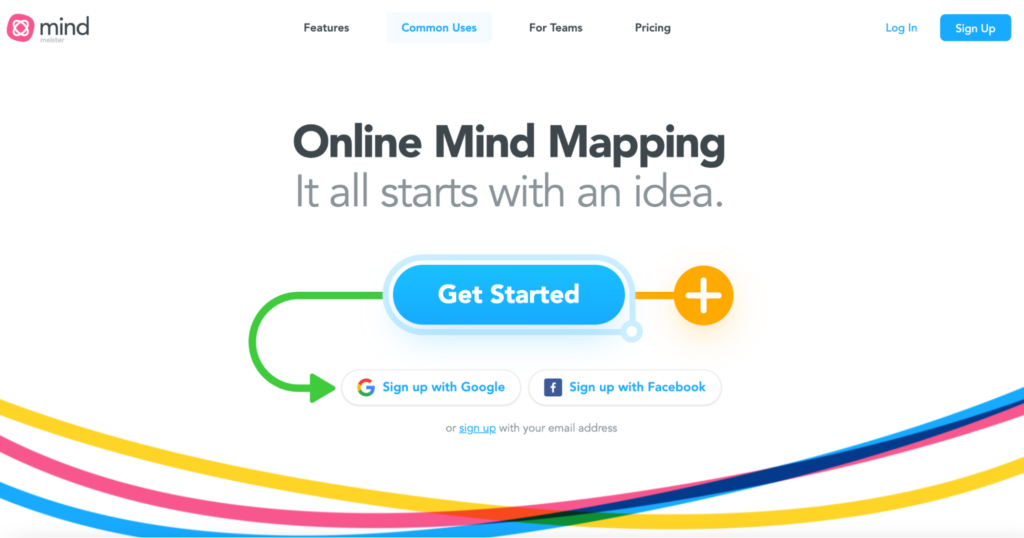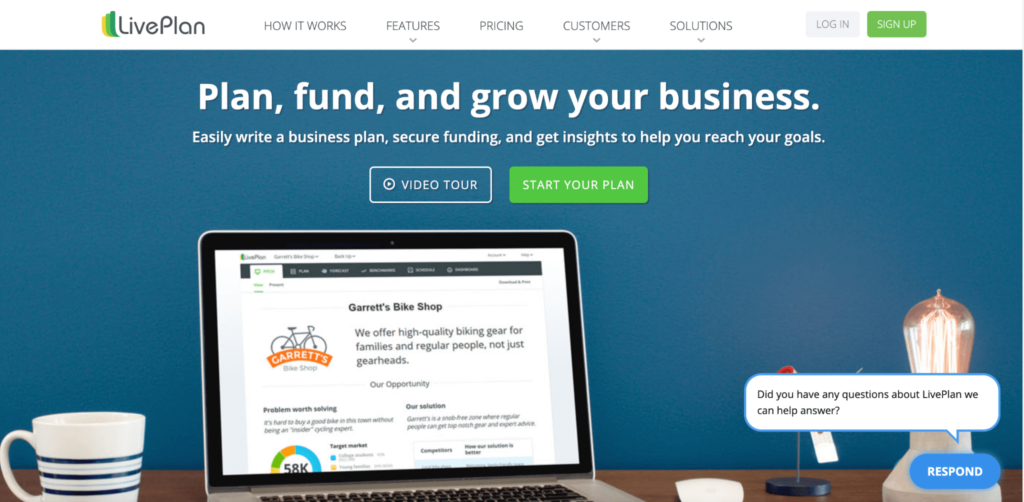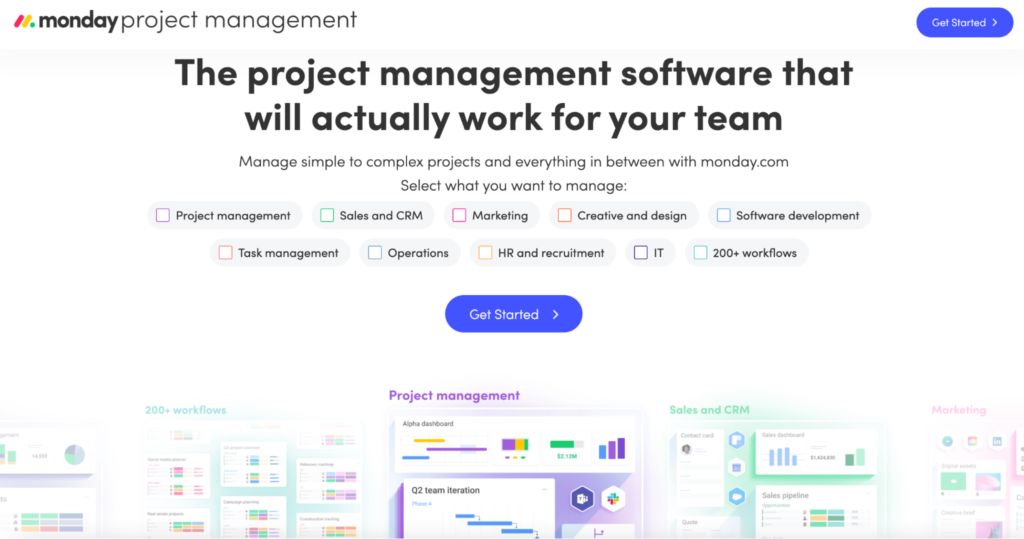Disclosure: This content is reader-supported, which means if you click on some of our links that we may earn a commission.
Starting an online business is a fast and easy path to entrepreneurship. There are endless possibilities for making money online.
You can get started with hardly any risk or experience. Best of all, online businesses don’t require much money to start either. That’s why intelligent entrepreneurs start online businesses instead of physical businesses.
Online businesses have changed the rules of the game.
You don’t need a degree, special skills, or millions of dollars in funding to get started. But with some time, patience, and a willingness to try new things, you can pave your way to financial freedom by making money online.
This in-depth guide explains everything you need to know about creating an online business, including the exact steps required to get started.
Why Starting an Online Business is Worth It
Online businesses offer several advantages. You can usually get started for relatively little money compared to the cost of a brick-and-mortar store or office. Once you’ve gotten your business off the ground, you can start thinking about scaling.
This brings us to another advantage: online businesses are often easier to scale because they aren’t bound by geography.
You can usually reach a wider audience more easily and cheaper than you could if you were running a traditional business.
Finally, an online business can make you money 24/7. That’s right: set your business up well, and it will run all day and night.
With the right marketing and a seamless checkout experience for your customer, you could literally be making sales while you sleep.
That said, you have to create the right business and set it up well in order to make the most of these advantages. Below, we’ve listed 8 steps to getting your online business off the ground.
The Investment Needed to Start an Online Business
There are a lot of variables depending on the type of business you’re starting, but here are a handful of things that everyone will need.
First up is a website. You can’t be an online business without an online presence. Your website may not need to be much more than a fancy landing page that tells customers what you offer and gives them a way to sign up. Or it might be a retail store that allows them to buy products. Or in the case of a SaaS business, it might include a portal where they can access their account.
Whatever you’re offering, you need a website that supports it.

Next, you need a way to accept payments for your products and/or services. There are a number of payment services you can choose from. The right one for you will depend on your sales volume, your industry, and the type of tech support you need.
We’re big fans of Square, which has no monthly fees and is fast and reliable. And if you ever decide to take your business off the internet and into real life, Square lets you easily accept in-person payments on any device.

8 Steps to Starting an Online Business
Of course, successful online businesses don’t just happen, even with brilliant ideas and all the right tools. Following are 8 steps to take you from idea to launch.
#1 – Come up with a business Idea
Facebook, Netflix, Amazon—three very successful, very different online businesses. Facebook sells a community, Netflix sells entertainment, and Amazon sells, well, everything these days, but they got their start as a retailer.
The point is that “online business” covers a lot of different areas. Whatever your background, chances are you can find a business where you can put your interests, skills, and experience to work.
We’ll talk about validating your idea in the next step, but for now, let’s brainstorm.
Here are some ideas to get you started:
- Create digital products, such as ebooks, apps, and videos
- Create an online course
- Sell physical products
- Create a community or membership program
- Create an affiliate marketing platform
- Offer SaaS (software as a service)
Once you’ve got a list of feasible ideas, start narrowing them down. Consider start-up costs, how easy it would be to scale, how long it would take to acquire the necessary skills (or how much it would cost to hire someone with them), and how interesting or exciting you find the idea. It doesn’t necessarily need to be your driving passion, but you’ll find it much easier to start and run a business if you aren’t bored to tears by it.
Take the time to investigate any potential competitors. You may find that the market has multiple online businesses in this area already. You may need to tweak your idea to set it apart from existing competitors. Perhaps you will decide you need to come up with a new business idea, because a competitor is already dominating the market, and you will be fighting an uphill battle.
Studying your competitors also may spark some ideas on how you can make improvements to your business idea. You may even want to become a customer and test your competitors’ services before starting your own business, finding areas where you can do a better job to draw your own customers.
If you’d like an easy way to track your ideas and brainstorm with others, we recommend Mind Meister. The mind mapping software is perfect for visualizing, collaborating, managing, and sharing your ideas. There’s even a free tier that lets you create up to three mind maps.

#2 – Validate Your Idea
You’ve got an idea and you think it could work. Now you need to be sure you can actually make money from it.
Market research is great—by all means, talk to your ideal customers, get to know them and their pain points, learn about their demographics, and find out how much they’d be willing to pay for what you offer.
But don’t stop there.
One of the best ways to ensure that people will actually pay (not just say they’d pay) is to create an early offer and see what the response is. You can do this in a number of ways, such as launching a crowdfunding campaign, setting up a store to take pre-orders, or creating a mini-version of a bigger product—an ebook instead of an entire course, for example.
Don’t sink a ton of money and time into creating a product that no one is willing to give you money for. Validating your idea allows you to gauge real interest in your offerings and tweak them as necessary.
#3 – Create a Business Plan
It may sound intimidating, but a business plan simply means going through all the ins and outs of your business idea to get an objective idea of the costs and potential profits. This step is essential if you’re looking for investors or applying for a business loan. But even if you’re funding your business out of your own pocket, it’s a really smart move.
Business plans typically include the following:
Executive summary. This is a brief statement describing your company and why it will be successful. You can also include your mission statement
Company description. Here, you can go into more detail about your company, how it will work, and what its competitive advantages are. For example, where will you source your products? Who are your customers?
Marketing & Sales. Here, you can describe your strategy for attracting and retaining prospective clients and what your anticipated marketing costs will be. Also describe your sales strategy, i.e., how you plan to turn your prospects into buyers.
Financial projections. Be realistic about the start-up and ongoing costs of your business, how much you’ll need to sell, and how long it will take before you see a profit.
If you’d like help organizing your plan, validating your ideas, and monitoring your projected cash flow and expenses, check out Live Plan.
The business planning software simplifies this step. You get access to industry-specific business plan templates, step-by-step business planning instructions, and a helpful one-page pitch to explain your idea to investors.

#4 – Research regulations & get legal advice
There are a number of federal, state, or local laws designed to protect consumers from faulty products and false advertising. Unfortunately, there’s no single set of rules that applies to all industries. For example, children’s products are regulated by the US Consumer Product Safety Commission, while the Food and Drug Administration regulates food, dietary supplements, and cosmetics.
Even well-intentioned business owners can run afoul of these laws if they’re not careful. It pays to understand what kind of claims you’re allowed to make about your products, where and how ingredients or components have to be sourced, and what your responsibilities are if a product fails.
Even if you don’t sell physical products, you may still need to protect yourself by posting appropriate disclaimers where customers are likely to see them. You may also want to consider formally copyrighting your intellectual property for extra protection against copyright violations.
A lawyer can help protect you and your business by ensuring that you know what laws you need to adhere to and how to protect your assets, both personal and professional.
#5 – Choose a business structure
Different business structures offer different balances of personal liability protection, tax efficiency, and convenience. For example, if you’re starting a simple business with no partners and no outside investment, a sole proprietorship is an easy and inexpensive way to get started. More formal structures, such as a limited liability company (LLC) or a corporation, offer more personal liability protection with varying tax advantages.
You’re not locked in—it’s possible to change your business structure later if you realize that a different structure would be more beneficial. Still, it’s worth taking the time to understand the pros and cons of each option so that you can get off to the strongest possible start.
An accountant or lawyer can advise you on the business entity that makes the most sense for your situation.
#6 – Develop your product/service
Finally, we’re getting to the good stuff! Whatever you’re selling, now is the time to start creating or obtaining it.
If you’re retailing physical products, figure out where and how you’ll buy them, taking shipping time and costs into consideration. If you’re creating a digital product, be it a video, blog, book, or app, start creating it.
Also, figure out how you’ll deliver your product or service. Will customers download a digital product or access it through a portal? Will you be drop-shipping physical goods or storing your own inventory? How much will shipping and handling cost? How will you manage customer questions, complaints, and returns?
Sorting out these details now, and not on the fly when you’re in the thick of things later, will pay off in stress, time, and money saved.
#7 – Build your team
The right people make all the difference. Depending on your size and budget, you may need to hire a full-time staff, or you might be better served with a handful of freelancers who can fill in with design, coding, writing, or other tasks as needed.
If you’re a bootstrapping sole proprietor with a lean budget, you may even want to do everything yourself while you get things off the ground. However, we suggest hiring and delegating as soon as it’s feasible. Even if it’s just a few hours a week, a part-time virtual assistant can take over routine tasks, giving you a few more hours to you can spend building your business.
Other jobs, such as copywriting or coding, call for specific expertise. If you don’t have the skills, invest in people who do. You’ll save time and money in the long run by getting it done right the first time.
Once you have a team in place, project management software can help keep everyone on track by making sure all the right people know who needs to do what by when. We recommend Monday.com. It has time tracking tools and collaborative boards to make sure work is progressing, and lets you set up recurring automations to eliminate repetitive tasks.

#8 – Market, market, market
It’s not enough to have a good—or even great—product or service. You need a plan to let customers know what you’re selling and how what it can do for them. If you’re an online business, chances are that you can do most or all of your marketing online. That still gives you a lot of different channels to choose from, though.
Marketing could include SEO-optimized web pages, social media posts, pay-per-click advertising, influencer marketing, creating an email list, sending text messages, and more. The channel(s) you choose will depend on your budget, audience, brand, and products. The options can be overwhelming, and they don’t necessarily call for the same skills. Writing a long-form sales page calls for a different type of expertise than creating a set of visually gorgeous Instagram posts, for example.
Again, this is an area where it pays to hire the right people, either full-time or on a freelance basis. Make sure they have a proven track record in the medium that best suits your business.
Next Steps
Starting any business can be daunting, but by following the steps laid out above, you’ll have a leg up on the competition. Now that your business is up and running, be sure to check our posts on reaching out to influencers, creating a successful marketing campaign, and creating a sales funnel for more ideas on successfully reaching your audience and landing sales.















